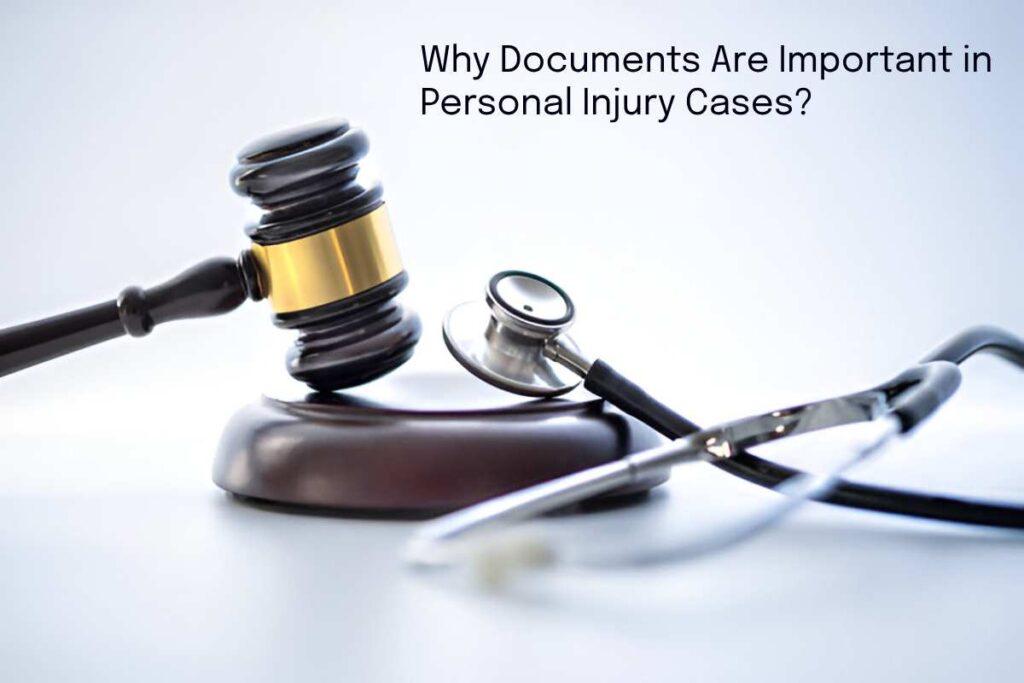5 Reasons Why Documents Are Important in Personal Injury Cases
Documentation is a key component to getting a fair shot at winning personal injury cases. When you get injured due to an accident or somebody else’s negligence, the physical pain, emotional distress, and financial burdens hurt your well-being all at once. To seek compensation, you must have evidence of the injuries and provide details surrounding the accident.
This is where documentation becomes an indispensable part of the entire legal process. Here’s a comprehensive guide on why documents matter and what to secure to support your personal injury claim:
Why Documentation Matters
Documents are the backbones of personal injury claims. They give a detailed and credible record of the accident. These papers also outline the victim’s injuries, their medical treatment, and the accident’s impact on their lives. Here’s why the importance of documenting the car accident is essential:
Proof of Liability and Negligence
You must prove that the defendant’s negligence was the reason for the injury. Show accident reports, photos, and witness statements that depict how the accident occurred.
Demonstrate Injury and Damages
Show the severity of your injuries to the court or insurance company by getting a copy of your medical records, detailed accounts of pain and suffering, and photographs of every injury you sustained. This might convince them to give you the fair compensation you deserve.
Track Medical Treatment
Extensive medical documentation, such as treatment plans, doctor’s notes, and hospital records, can build a timeline of care and show the court the accident’s impact on the injured party.
Calculate Economic Losses
Personal injury can lead to severe financial losses. Medical bills, lost wages, medical expenses, and other expenses strain your daily budget. Keep receipts, invoices, and pay stubs to support your claim and get compensation for your entire ordeal.
Support Pain and Suffering Claims
Pain and suffering are harder to prove since they’re classified as non-economic damages. You need to have psychological evaluations, testimonies from families and friends, and detailed personal journals to prove the emotional toll the accident has on you.
Key Types of Documentation
Build a strong case by getting these essential documents:
Accident Reports
These documents outline the details of the accidents, such as the parties involved, conditions at the time of the accidents, and fault or negligence observations. Some examples are police reports, accident reconstruction reports, and written reports from workplace safety officials.
Photographs and Videos
Visual evidence is one of the most powerful tools in court. It can show the circumstances and aftermath of a traumatic accident, including the accident scene, injuries, and property damage. Secure photos and CCTV footage from multiple angles with timestamps for more solid evidence.
Witness Statements
These statements provide details that are not captured in photos and videos or excluded in police reports. The claim is strong when the witness says things that confirm the victim’s story.
Medical Documents
They’re documents that medical professionals who treated the accident victims can provide. These include:
- Doctor’s Notes: The doctor wrote specific instructions for the patient.
- Emergency Room Reports: These are reports of the patient’s physical examination, including tests conducted at the time of admission.
- Treatment Plans: These are courses of treatment for the patient following the accident, such as physical therapy.
- Diagnostic Tests: Since it’s an injury, tests may include an X-ray, MRI, and CT scan.
- Follow-up Care Notes: These are instructions on what the patient should do after getting discharged from the hospital.
Personal Injury Journal
This journal contains your pain levels, emotional struggles, and physical limitations as you recover from the accident.
Financial Records
You must shoulder medical costs, which means dwindling finances and lessened earning capacity while recovering. Secure copies of pay stubs and employer statements to establish your financial losses due to the injury.
How to Document a Personal Injury Case
These tips can ensure you’ll have effective and comprehensive documentation for your personal injury lawsuit.
- Act Immediately: There’s no better time to act on securing personal injury evidence than after the accident. Evidence can be tampered with or lost over time. A person’s memory fades, so you must get a witness’s testimony as early as possible. Immediate action preserves the evidence’s integrity before others with malicious intentions can destroy it.
- Be Consistent with Details: As much as possible, make sure you accurately remember the date, time, and details of the accident. Your consistent details are important for solving the case as it solidifies your claim.
- Organize and Store Documents Securely: Keep physical and digital copies of your documents. The digital ones are helpful for backups. Put the physical copies inside a vault and seal it with a passcode.
What a Personal Injury Attorney Can Do
Get an experienced personal injury attorney to help you with your case. They know personal injury lawsuits well and can guide you on the documents to secure and how to get each. Your personal injury attorney in Texas can organize your documents, present evidence compellingly, and support you in your battle for justice.
Final Thoughts
Documents are the foundation to establish a solid claim to the court. It determines liability, shows your injuries’ depth, and tabulates your financial loss. Understanding how to secure these documents will boost your chances of winning the case and getting compensated for what you went through.






